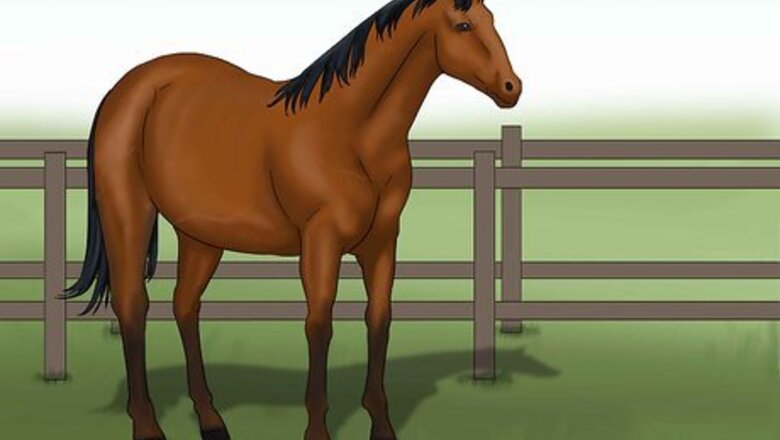
views
Identifying Common Black-Point Horse Colors
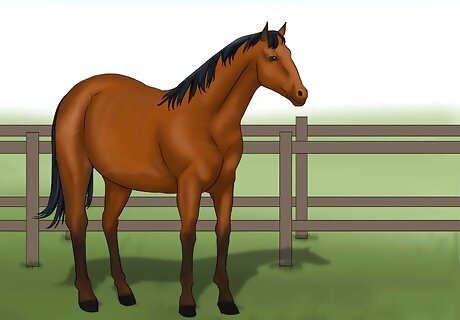
Identify a bay horse by its dark red or reddish brown body color and black points. Bay horses come in various shades of red and reddish brown, but always have a black mane, tail, and lower legs. They sometimes have a mix of darker and lighter colored hairs in their coats. Standard bay horses have a medium reddish brown shade with an even color all over and no mix of lighter or darker hairs. Some variations of bay horses are blood bay (a very dark blood-red color), mahogany bay (a bay that is so dark it almost looks black), and light bay (a light, yellowish shade of red).
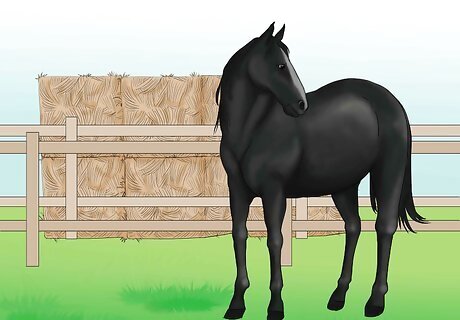
Distinguish a black horse by its entirely black coat, mane, and tail. Black horses have black points and a dark black coat all over their body. There are no brown, red, or lighter colors on a true black horse. White markings can appear on a black horse. They usually occur on its head or lower legs. These small markings don't classify the horse as a different color. Some black horses fade in color due to sun exposure over time. They are still considered to be black. Black horses that don’t fade in color over time are called jet black or raven black.
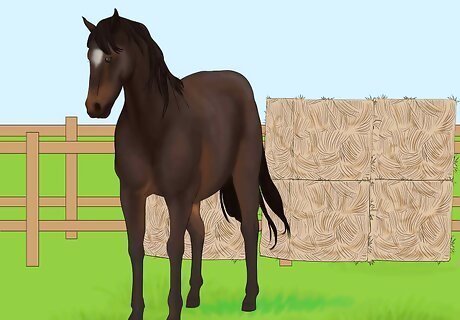
Look for black points and light brown spots to identify a brown horse. Brown horses usually have have brown manes, tails, and lower legs with a dark brown coat. They have lighter brown or tan spots on the muzzle, shoulders, and flanks. Brown is sometimes considered a shade of bay horse instead of a separate color. In this case it is called a dark bay.
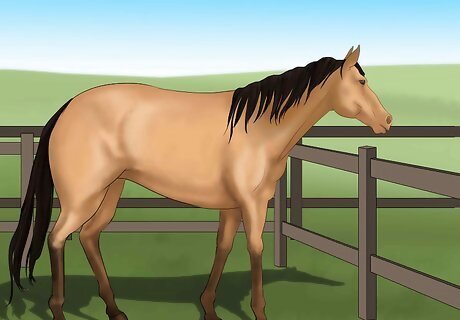
Spot a buckskin horse by its yellow or golden coat color and black points. Buckskin refers to a variety of yellow and golden-colored shades of horses with black points. Their colors range from light tan to golden yellow or orange shades. Buckskin horses often have a long dorsal stripe running down the length of their back. A standard buckskin is called a yellow buckskin. They have a medium yellow coat color all over. Some examples of buckskin color variations are dusty buckskin (a dark brownish-yellow shade), golden buckskin (a dark golden shade), and silvery buckskin (a shade so light that it almost looks silver).
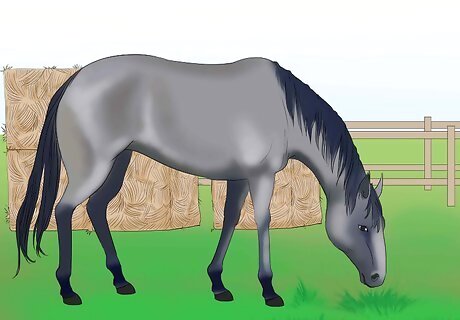
Recognize a grulla horse by their mousy, smoky-colored hairs. Grullas have smoky gray hairs all over their body with a black mane and tail. Their lower legs are usually black as well. They often have a dorsal stripe, a stripe down the middle of their back, and sometimes a darker head. To consider a horse a grulla, each individual body hair has to be the same smoky gray color. The coat should not be a blend of white hairs and colored hairs.
Recognizing Other Horse Colors
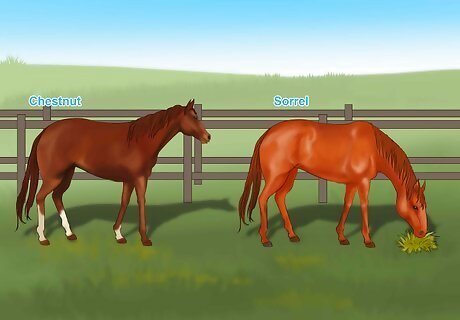
Identify a chestnut or sorrel horse by its red color all over with no black hairs. A chestnut or sorrel horse has a coppery red or deep reddish brown coat color on the body and legs. The mane and tail will be the same color as the body or lighter. Make sure the horse has no black points to classify it as a chestnut or sorrel. Flaxen chestnuts are a variety of chestnuts with much lighter tails and manes. The tails and manes should be a pale yellow color to classify a chestnut as a flaxen. A light chestnut, or sandy chestnut, is a variety of chestnut horse with a sand-colored body, legs, mane, and tail.
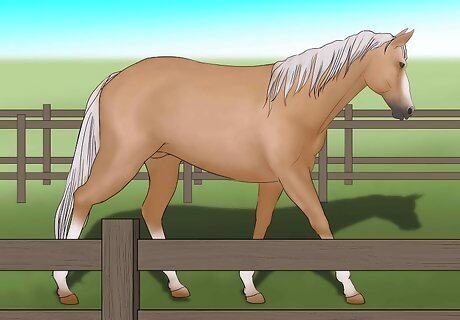
Spot a palomino horse by its golden or yellow color and pale mane and tail. The body color of palominos varies from light tan to darker golden shades. Their manes and tails will be pale flaxen or white, and sometimes have some black hairs mixed in. Palominos are differentiated by names like golden palomino, chocolate palomino, or yellow palomino to describe the different shades of their body color.
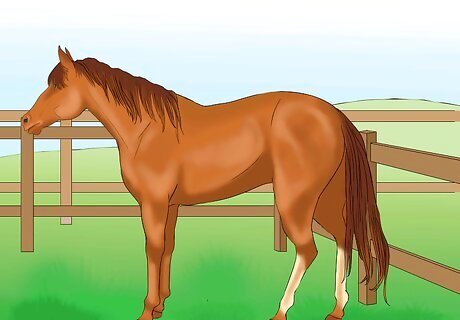
Recognize a red dun horse by a red-brown color all over and a dorsal stripe. Red dun horses are similar in color to chestnuts. Look for a dorsal stripe running down the middle of their back to distinguish a red dun horse. The coat of a red dun can be varying shades of red or reddish yellow. The mane and tail can be lighter or darker than the body color. Try to glimpse a look at its skin. Duns have black skin, and you can check this by gently separating a part of the coat and taking a peek. Look at its coat. Duns have a yellowish color coat which makes them mistakable for palomino horses, the difference being that duns have black manes and tails, whereas a palomino's mane and tail will be the same color as its coat or lighter. Dun, also called bay dun, classic dun, or zebra dun is the most common type of dun, and has a tan or gold body with black mane, tail, and primitive markings. Genetically, the horse has an underlying bay coat color, acted upon by the dun gene.
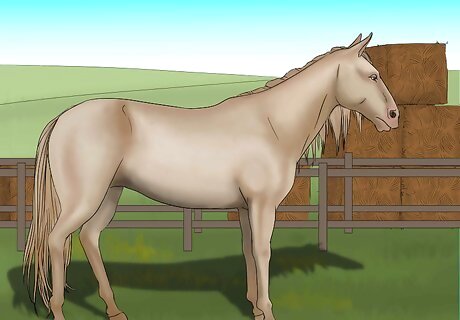
Identify a cream or cremello horse by its ivory color, pink skin, and blue eyes. Cream or cremello horses have a very light, almost white coat. The mane and tail are also almost or completely white. The skin of the horse is a pale pink color and the eyes are always blue. Perlino is a variation of the cremello color in which little amounts of a coffee or cream color are mixed in to the mane, tale, and lower legs of the horse. Smokey cream or smokey perlino are names used when there are higher concentrations of these colors in the horse.











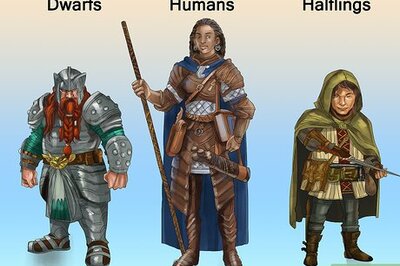







Comments
0 comment